
Kathleen "Kay" Walsh was an English actress, dancer, and screenwriter. Her film career prospered after she met her future husband film director David Lean, with whom she worked on prestige productions such as In Which We Serve and Oliver Twist.

The Horse's Mouth is a 1944 novel by Anglo-Irish writer Joyce Cary, the third in his First Trilogy, whose first two books are Herself Surprised (1941) and To Be A Pilgrim (1942). The Horse's Mouth follows the adventures of Gulley Jimson, an artist who would exploit his friends and acquaintances to earn money, told from his point of view, just as the other books in the First Trilogy tell events from their central characters' different points of view. Cary's novel also uses Gulley's unique perspective to comment on the social and political events of the time.
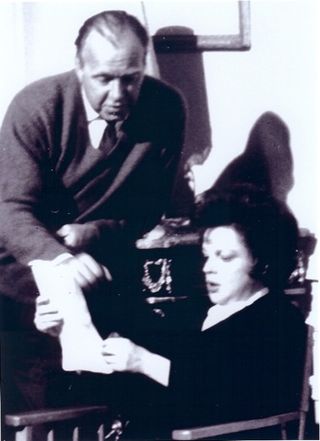
Ronald Neame CBE, BSC was an English film producer, director, cinematographer, and screenwriter. Beginning his career as a cinematographer, for his work on the British war film One of Our Aircraft Is Missing (1943) he received an Academy Award nomination for Best Special Effects. During a partnership with director David Lean, he produced Brief Encounter (1945), Great Expectations (1946), and Oliver Twist (1948), receiving two Academy Award nominations for writing.
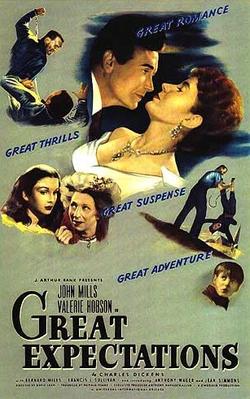
Great Expectations is a 1946 British drama film directed by David Lean, based on the 1861 novel by Charles Dickens and starring John Mills and Valerie Hobson. The supporting cast included Bernard Miles, Francis L. Sullivan, Anthony Wager, Jean Simmons, Finlay Currie, Martita Hunt and Alec Guinness.
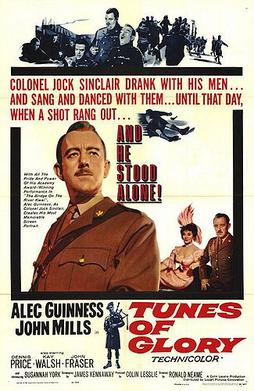
Tunes of Glory is a 1960 British drama film directed by Ronald Neame, based on the 1956 novel and screenplay by James Kennaway. The film is a "dark psychological drama" focusing on events in a wintry Scottish Highland regimental barracks in the period immediately following the Second World War. It stars Alec Guinness and John Mills, featuring Dennis Price, Kay Walsh, John Fraser, Duncan MacRae, Gordon Jackson and Susannah York.
John Randall Bratby RA was an English painter who founded the kitchen sink realism style of art that was influential in the late 1950s. He made portraits of his family and celebrities. His works were seen in television and film. Bratby was also a writer.
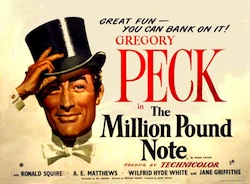
The Million Pound Note is a 1954 British comedy film directed by Ronald Neame and starring Gregory Peck, Ronald Squire, Wilfrid Hyde-White and Jane Griffiths. It is based on the 1893 Mark Twain short story The Million Pound Bank Note, and is a precursor to the 1983 film Trading Places. It was shot at Pinewood Studios and on location around London. The film's sets were designed by the art directors John Box and Jack Maxsted. It was released by Rank's General Film Distributors. The American release was handled by United Artists under the alternative tile Man with a Million.
Mike Morgan, born John Michael Pughe-Morgan, was a British actor. He appeared in several TV programmes and made his film acting debut in the 1957 film comedy Barnacle Bill, which starred Sir Alec Guinness.

A Man Could Get Killed is a 1966 American adventure comedy film directed by Ronald Neame and Cliff Owen, shot on various locations in Portugal and starring James Garner, Melina Mercouri, Sandra Dee, Anthony Franciosa, and Robert Coote. Filmed scenes with Jenny Agutter, then 14, did not appear in the final cut.
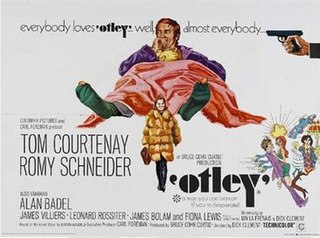
Otley is a 1968 British comedy thriller film, starring Tom Courtenay and Romy Schneider. It was adapted by Dick Clement and Ian La Frenais from a book by Martin Waddell, and released by Columbia Pictures.
Christopher Elwin Neame was a British film producer and screenwriter.
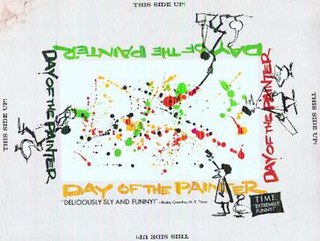
Day of the Painter is a 1960 American short film directed by Robert P. Davis. It was filmed at Mamaroneck Harbor in Mamaroneck, NY.

Sir Alec Guinness was an English actor. After an early career on the stage, Guinness was featured in several of the Ealing comedies, including Kind Hearts and Coronets (1949), in which he played eight different characters, The Lavender Hill Mob (1951), for which he received his first Academy Award nomination, and The Ladykillers (1955). He collaborated six times with director David Lean: Herbert Pocket in Great Expectations (1946), Fagin in Oliver Twist (1948), Col. Nicholson in The Bridge on the River Kwai (1957), for which he won both the Academy Award for Best Actor and the BAFTA Award for Best Actor, Prince Faisal in Lawrence of Arabia (1962), General Yevgraf Zhivago in Doctor Zhivago (1965), and Professor Godbole in A Passage to India (1984). In 1970, he played Jacob Marley's ghost in Ronald Neame's Scrooge. He also portrayed Obi-Wan Kenobi in George Lucas's original Star Wars trilogy; for the original 1977 film, he was nominated for Best Supporting Actor at the 50th Academy Awards.
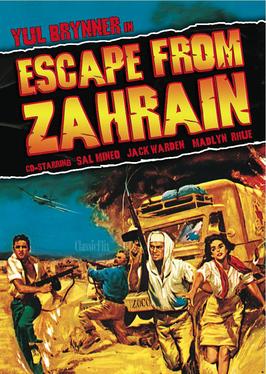
Escape from Zahrain is a 1962 American Panavision adventure film directed by Ronald Neame and starring Yul Brynner. The film is based on the novel Appointment in Zahrain by Michael Barrett (1960).

The Card is a 1952 British comedy film version of the 1911 novel by Arnold Bennett. In America, the film was titled The Promoter. It was adapted by Eric Ambler and directed by Ronald Neame. It stars Alec Guinness, Glynis Johns, Valerie Hobson, and Petula Clark. The film was nominated for the Academy Award for Best Sound.

Windom's Way is a 1957 British thriller film directed by Ronald Neame and starring Peter Finch and Mary Ure. Made in Eastman Color, it is set during the Malayan Emergency.
Cineguild Productions was a production company formed by director David Lean, cinematographer Ronald Neame and producer Anthony Havelock-Allan in 1944. The company produced some of the major British films of the 1940s.

Veronica Turleigh was an Irish actress.

The Astral is a 2011 novel by Kate Christensen. It is about a poet, Harry Quirk, who having been thrown out of the family apartment at the Astral by his wife Luz, attempts to get his life back together.
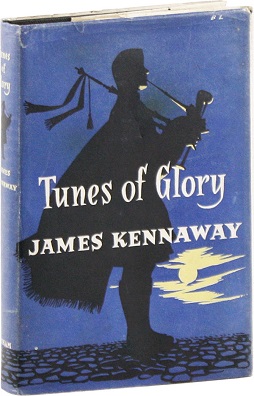
Tunes of Glory is a 1956 novel by the British writer James Kennaway. It portrays the peacetime tensions in a Highland regiment shortly after the Second World War.















